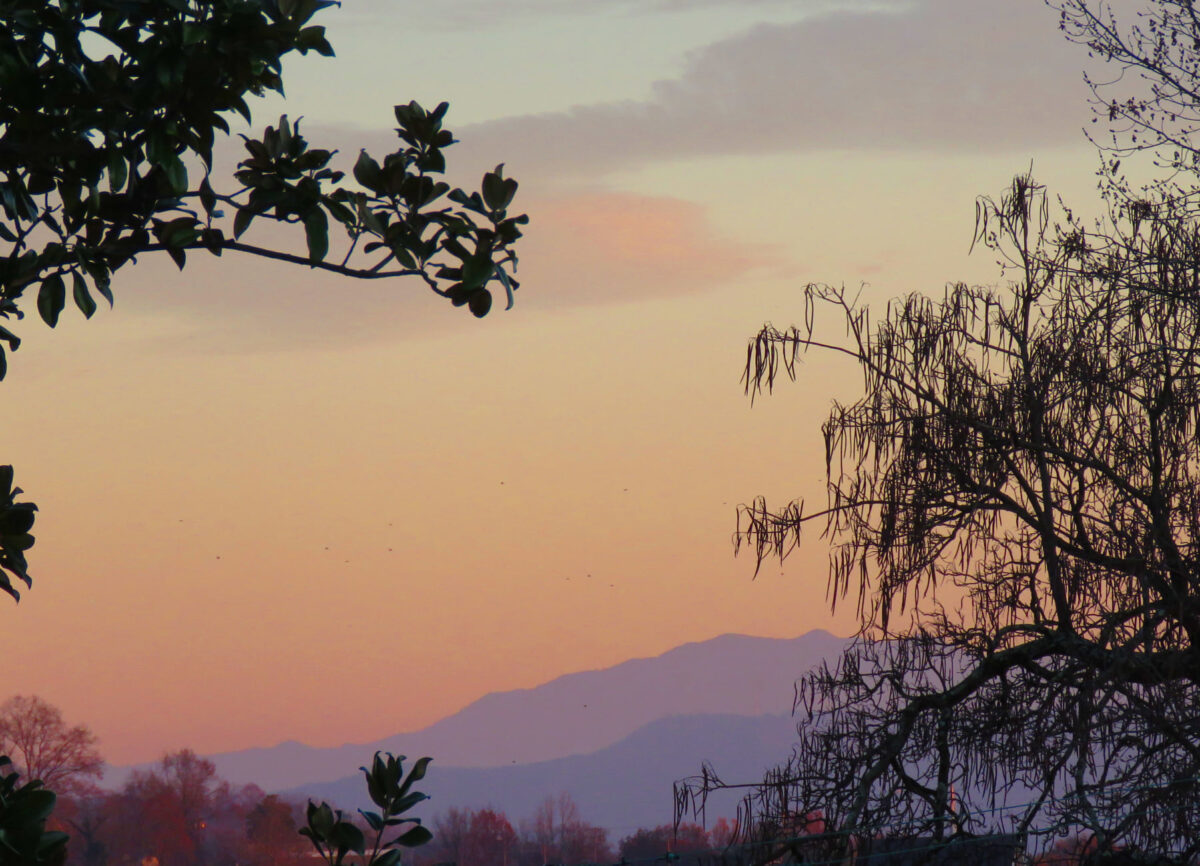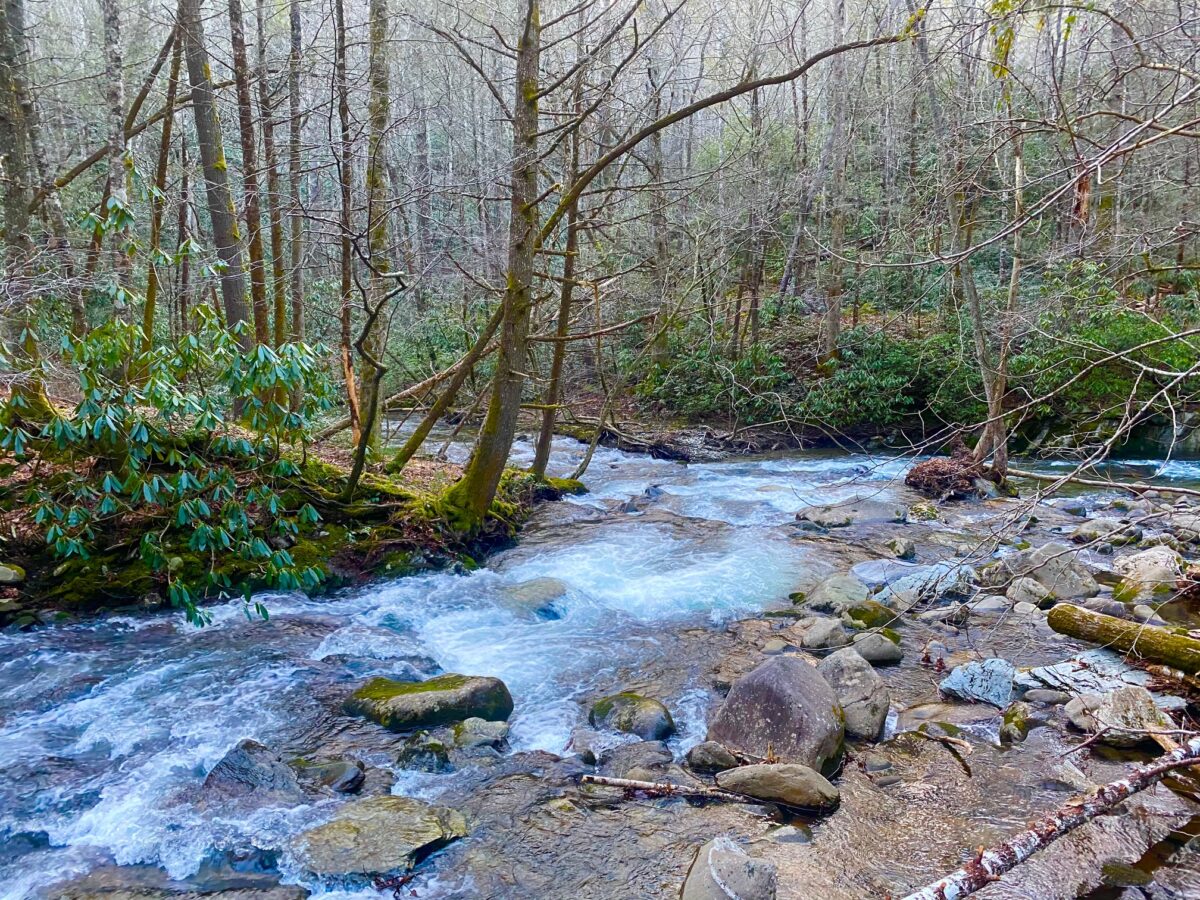“Everyone needs beauty as well as bread, places to play in and pray in where nature may heal and cheer and give strength to body and soul alike.”
– John Muir, 1869 The Yosemite (1912), page 256.

Looking west from Hogback Overlook, Skyline Drive, Shenandoah National Park, Summer 2021: Glynn Wilson
Staff Report –
WASHINGTON, D.C. – In reporting annual visitation numbers to America’s national parks for 2021, the National Park Service is making a push to try to take some of the pressure off the most famous parks, which have experienced overcrowding and damage from overuse over the past couple of years especially during the summer travel season, and to highlight some of the lesser known and visited parks in 2022.
The national parks experienced a boom in new visitors during the coronavirus pandemic as many people across the country and the world realized that getting outdoors in nature was something they could do to get out of the house and reflect yet practice social distancing to avoid catching Covid. Some parks experienced a drop in 2020 in visitation overall, however, due to some parks and facilities being closed because of the pandemic.
Travel in Recreational Vehicles (RVs) and camping also experienced a boom in 2020 and 2021, spurred on not just by the pandemic but also the fame of the Academy Award winning movie Nomadland.
While some of the most well-known national parks again had record visitation in 2021, numbers across the entire National Park System remained below pre-pandemic totals, according to a press release from the National Park Service, a federal agency that is part of the Department of the Interior and created in large measure by the writing and illustrations of John Muir and other artists and photographers who helped promote what was later called “America’s Best Idea” by documentary film maker Ken Burns on PBS.
Of 423 named national parks in the National Park System, only 25 received more than half the total recreational visits measured by the agency, 297.1 million total visits in 2021. Last year’s visitation increased by 60 million or 25 percent over 2020 when Covid-19 shuttered facilities in many parks for at least part of the year.
“It’s wonderful to see so many Americans continuing to find solace and inspiration in these incredible places during the second year of the pandemic,” said National Park Service Director Chuck Sams, the first Native American to hold the position. “We’re happy to see so many visitors returning to iconic parks like Yellowstone and Yosemite, but there are hundreds more that should be on everyone’s bucket list. Whatever experience you’re looking for in 2022, national parks are here to discover.”
The increase in visitation in 2021 was largely due to parks evolving Covid-19 protocols, the agency says, which allowed more park facilities to be open and available for visitors than in 2020. While visitation has not completely recovered to pre-pandemic levels, it has regained much of the visitation lost due to pandemic restrictions in 2020 and is now at a level like the 2014-2015 run up to the NPS Centennial in 2016.
One way the park service is encouraging people to visit the less famous and less visited parks is by encouraging people to plan new experiences by exploring clusters of parks.
It has been said that the largest and most famous parks are being “loved to death.”
“Create your own circle of discovery,” the agency says.
A visit to Redwoods State and National Parks offers a great opportunity to explore Whiskeytown National Recreation Area, for example, or Oregon Caves National Monument and Preserve and Lassen Volcanic National Park.
When in Maine for a visit to Acadia National Park, they say don’t miss Saint Croix Island International Historic Site and one of America’s newest national parks, Katahdin Woods and Waters National Monument.

Continuing my romance with the mountains, talk about purple mountains majesty, this is our view from the rooftop smoking porch of the Great Smoky Mountains: Glynn Wilson
If your 2022 trip will take you to Great Smoky Mountains National Park, the agency says, also consider Chickamauga and Chattanooga National Military Park, Cumberland Gap National Historical Park, Little River Canyon National Preserve in Alabama, Carl Sandburg National Historic Site or the Obed Wild and Scenic River.
“As you plan your travel, take advantage of the search feature on the NPS website to search by state, activity and topic,” they say. “You’re sure to discover a hidden gem or two.”
The agency is also urging people to download the NPS App from the iOS App Store or Google Play Store to find up-to-date information about all 423 national parks.
The core mission of the National Park Service (NPS) is to protect park resources and values and to provide for the enjoyment of parks by this and future generations, the agency says on its website.
By design, parks attract a significant amount of public interest, which in turn generates a stream of visitors engaging in a variety of activities at parks. Good management of parks depends on consistent, reliable, high quality information about visitor use, and monitoring that use is a fundamental responsibility of park managers. To this end, agency managers devote a significant amount of staff time and funding to manage and monitor the use of parks by visitors. Some primary concerns are how many people visit a park, what they are doing while they visit, how long they stay, and characteristics of the ‘typical’ visitor.
Inside the 2021 Visitation Report
Forty-four parks set a record for recreation visits in 2021, and six parks broke a visitation record they set in 2020.

Muted Autumn color from an overlook along the Blue Ridge Parkway on Mount Mitchell looking west toward Tennessee: Glynn Wilson
The Blue Ridge Parkway remained the most-visited park, and the Great Smoky Mountains National Park set a visitation record in 2021, surpassing 14 million visits for the first time.
Five parks began reporting official visitor statistics for the first time, including Alagnak Wild River in Alaska, Camp Nelson National Monument in Kentucky, Medgar and Myrlie Evers Home National Monument in Mississippi, Tule Springs Fossil Beds National Monument in Nevada, and the World War I Memorial in Washington, D.C.
In 2021, some parks operated with limited capacities or indoor space restrictions, but most were open to visitors.
Seven parks — all of them historic sites in urban areas — remained closed throughout 2021 due health and safety concerns related to Covid-19, including the Frederick Douglass House in Washington, D.C.
Recreation visitor hours dipped from 1.43 billion in 2019 to 1.36 billion in 2021, a 5 percent drop, even as some of the more famous national parks experienced more visitation.
The Raw Numbers
The total number of recreation visits came to 297,115,406, and included 1,356,657,749 recreation visitor hours and 12,745,455 overnight stays (recreation + non-recreation).
Three parks had more than 10 million recreation visits – the Blue Ridge Parkway, Great Smoky Mountains National Park, and Golden Gate National Recreation Area.
Eleven parks had more than five million recreation visits – up from seven parks in 2020 and equal to the number of parks in 2019.
Seventy-three parks had more than one million recreation visits (19% of reporting parks) – up from 60 parks in 2020 and down from 80 parks in 2019.
Twenty-five percent of total recreation visits occurred in the top eight most-visited parks, or just 2 percent of all parks in the National Park System.
Half of total recreation visits occurred in the top 25 most-visited parks, or 6 percent of all parks in the National Park System.
The 25 most visited parks in the National Park System were:
Blue Ridge Parkway: 15.9 million
Great Smoky Mountains National Park: 14.1 million
Golden Gate National Recreation Area: 13.7 million
Gateway National Recreation Area: 9.1 million
Lake Mead National Recreation Area: 7.6 million
George Washington Memorial Parkway: 6.8 million
Natchez Trace Parkway: 6.4 million
Lincoln Memorial: 5.8 million
Gulf Islands National Seashore: 5.5 million
Zion National Park: 5 million
Chesapeake and Ohio Canal National Historical Park: 5 million
Yellowstone National Park: 4.9 million
Grand Canyon National Park: 4.5 million
Rocky Mountain National Park: 4.4 million
Delaware Water Gap National Recreation Area: 4.3 million
Acadia National Park: 4 million
Cape Cod National Seashore: 4 million
Grand Teton National Park: 3.9 million
World War II Memorial: 3.7 million
Vietnam Veterans Memorial: 3.6 million
Yosemite National Park: 3.3 million
Chattahoochee River National Recreation Area: 3.3 million
Cape Hatteras National Seashore: 3.2 million
Indiana Dunes National Park: 3.2 million
Glen Canyon National Recreation Area: 3.1 million
More Original Photos

A view of the Potomac River where it intersects the Shenandoah and the railroad bridge and tunnel on the AT from Harpers Ferry National Historical Park: Glynn Wilson

Taking a break by a babbling brook on a winter Sunday afternoon in Cades Cove, Great Smoky Mountains National Park: Glynn Wilson

A cabin surrounded by peak fall color in Shenandoah National Park in the group area of Mathews Arm Campground, Autumn 2020: Glynn Wilson




















Great job!